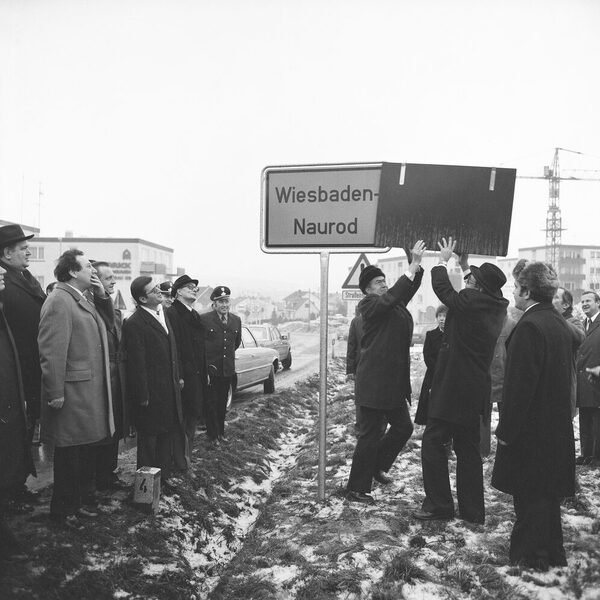Incorporations
Since 1926, 20 municipalities have been incorporated into Wiesbaden. The town of Biebrich and the rural communities of Schierstein and Sonnenberg made the start on October 1, 1926. This increased the total area of Wiesbaden by over 3,500 hectares; the number of inhabitants rose to 132,000. Wiesbaden had thus become a city on the Rhine. As early as 1895, the mayor of Biebrich, Rudolf Vogt, had sought the incorporation, but initially without success. It was not until the time of the Weimar Republic that an incorporation treaty was negotiated, which both city councils approved on December 21, 1923. The decisive factors for the incorporation of Schierstein were securing the drinking water supply for Wiesbaden and the necessary expansion of the Schierstein harbor. In May 1921, the contract was approved by the citizens' representatives. In March 1925, the Schierstein municipal council attempted to resign at the "last minute", but the then mayor Kessels was able to prevail with his advocacy of annexation to Wiesbaden. Efforts to incorporate Sonnenberg also date back to the end of the 19th century. However, it took until 1926 for the agreement to be concluded. The first incorporations required a law from the Prussian state parliament in Berlin, which was passed on October 28, 1926. Biebrich, Schierstein and Sonnenberg left the district of Wiesbaden with retroactive effect from October 1.
As a result of the expansion of the city district of Frankfurt, nine further municipalities from the district of Wiesbaden were incorporated into the city on 01.04.1928: Bierstadt, Dotzheim, Erbenheim, Frauenstein, Georgenborn, Heßloch, Igstadt, Kloppenheim and Rambach. At the same time, the district of Wiesbaden was dissolved. The population rose to 153,665 inhabitants. For Georgenborn, being part of Wiesbaden was only a brief episode. The incorporation was reversed in 1939. The last incorporation on 01.01.1977 involved six municipalities in the Main-Taunus district: Auringen, Breckenheim, Delkenheim, Medenbach, Naurod and Nordenstadt. As a result, Wiesbaden grew by an area of 4,014 ha. The population rose from 250,592 (1976) to 274,464 in 1980. Mainz-Kastel, Mainz-Amöneburg and Mainz-Kostheim ( AKK for short), which were handed over to Wiesbaden on 10 August 1945 by order of the French and American military administration, are a geographical and political peculiarity. As a result, Wiesbaden's population grew by 18,266 inhabitants (1946) and 2,261.99 hectares.
Literature
Faber, Rolf: Wiesbaden's first incorporations 50 years ago. In: Wiesbadener Leben 11/1976 and 12/1976.
Schmidt-von Rhein, Andreas; Schmidt-von Rhein, Georg (ed.): From Biebrich to Wiesbaden. Two towns grow together. Ed.: Kur- und Verkehrsverein e.V., Gesellschaft zur Förderung Wiesbadens, o.O. 1998.
